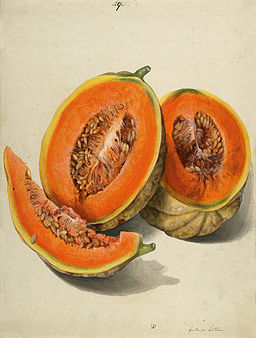There’s a reason why people look for the first and last
frost dates in their area. Many gardeners, including myself, plan their
gardens around these dates. In the north, the spring frost signals the beginning
of the growing season while the fall frost signals the end. These dates are
also called the first and last average frost dates with the last occurring in
the spring and the first in fall.
List of Average Frost Dates in the North
Scroll down to find your state and the city nearest you
for the average first and last frost dates in your area. The first date listed
is the average frost date for the spring and the last is for the fall.
Average New England
Frost Dates
Maine
Augusta:
4/27/13 – 10/8/12
Bangor:
5/7/13 – 10/7/12
Portland:
5/2/13 – 10/6/12
Presquile: 4/21/13-
9/20/12
New
Hampshire
Berlin:
5/20/13 – 9/21/12
Concord:
5/20/13 – 9/21/12
Keene:
5/13/13 – 9/26/12
Nashua:
5/7/13 – 10/3/12
Vermont
Burlington:
5/8/13 – 10/3/12
Montpelier:
5/11/13 – 10/1/12
Rutland:
5/13/13 – 9/28/12
Massachusetts
Boston:
4/7/13 – 11/7/12
New
Bedford: 4/13/13 – 11/2/12
Worcester:
4/26/13 – 11/14/12
Vermont
Burlington:
5/8/13 – 10/3/12
Montpelier:
5/11/13 – 10/1/12
Rutland:
5/13/13 – 9/28/12
Rhode
Island
Kingston:
5/8/13 – 10/3/12
Providence:
4/16/13 – 10/22/12
Connecticut
Danbury:
5/1/13 – 10/9/12
Hartford:
4/26/13 – 10/9/12
Stamford:
4/29/13 – 10/17/12
Average Frost Dates for the Mid Atlantic (North)
New York
Albany: 5/2/13 - 10/3/12
Buffalo: 4/24/13 - 10/19/12
Elmira: 5/9/13 - 10/3/12
Lake Placid: 6/7/13 - 9/11/12
New York City: 4/1/13 - 11/15/12
Syracuse: 4/28/13 - 10/13/12
New Jersey
Atlantic City: 3/31/13 - 11/11/12
Cape May: 4/6/13 - 11/6/12
New Brunswick: 4/20/13 - 10/20/12
Newark: 4/3/13 - 11/7/12
Pennsylvania
Erie: 4/29/13 - 10/29/12
Lebanon: 4/27/13 - 10/13/12
Philadelphia: 4/6/13 - 11/4/12
Pittsburgh: 4/29/13 - 10/17/12
Wilkes Barre: 4/26/13 - 10/16/12
Average Frost Dates for the Midwest
(North)
Wisconsin
Appleton:
5/4/13 – 10/7/12
Eau
Claire: 5/7/13 – 9/29/12
Madison:
5/10/13 – 10/2/12
Milwaukee:
4/27/13 – 10/14/12
Indiana
Evansville:
4/3/13 – 11/3/12
Indianapolis:
4/18/13 – 10/18/12
South
Bend: 4/26/13 – 10/19/12
Terra Haute: 4/20/13 – 10/15/12
Illinois
Chicago:
4/20/13 – 10/24/12
Mount
Vernon: 4/14/13 – 10/14/12
Quincy:
4/10/13 – 10/22/12
Springfield:
4/13/13 – 10/13/12
Ohio
Cincinnati:
4/13/13 – 10/23/12
Cleveland:
4/30/13 – 10/23/12
Columbus:
4/26/13 – 10/13/12
Toledo:
5/1/13 – 10/8/12
Michigan
Cheboygan: 5/18/13 – 10/10/12
Detroit:
4/26/13 – 10/17/12
Grand
Rapids: 5/5/13 – 10/8/12
Marquette:
5/11/13 – 10/13/12
Missouri
Jefferson
City: 4/13/13 – 10/18/12
Kansas
City: 4/7/13 – 10/28/12
Poplar
Bluff: 4/4/13 – 10/28/12
St.
Louis: 4/7/13 – 10/29/12
North
Dakota
Bismarck:
5/14/13 – 9/21/12
Fargo:
5/10/13 – 9/27/12
Grand
Forks: 5/10/13 – 9/27/12
Minot:
5/9/13 – 9/28/12
South
Dakota
Hot
Springs: 5/16/13 – 9/20/12
Pierre:
5/2/13 – 10/3/12
Sioux
Falls: 5/3/13 – 9/28/12
Watertown:
5/10/13 – 9/25/12
Minnesota
Baudette: 5/16/13 – 9/21/12
Duluth:
5/15/13 – 10/17/12
Minneapolis:
4/30/13 – 10/5/12
Willmar:
4/30/13 – 10/1/12
Nebraska
Grand
Island: 4/26/13 – 10/8/12
North
Platte: 5/5/13
– 10/4/12
Omaha:
4/21/13 – 10/12/12
Scottsbluff: 5/3/13 – 9/27/12
Iowa
Cedar
Rapids: 4/25/13- 10/6/12
Des
Moines: 4/20/13
– 10/12/12
Fort
Dodge: 4/29/13 – 10/4/12
Sioux
City: 4/26/13 – 10/3/12
Average Frost Dates for the West (North)
Idaho
Boise:
5/5/13 – 10/8/12
Idaho
Falls: 5/27/13 – 9/20/12
Moscow:
5/25/13 – 9/20/12
Salmon: 5/25/13 – 9/20/12
Montana
Billings:
5/8/13 – 9/27/12
Bozeman:
5/26/13 – 9/19/12
Glendive: 5/2/13 – 9/29/12
Great
Falls: 5/17/13 – 9/22/12
Helena:
5/19/13 – 9/18/12
Wyoming
Casper:
5/22/13 – 9/19/12
Cheyenne:
5/12/13 – 9/26/12
Gillette: 5/18/13 – 9/22/12
Alaska
Anchorage:
5/8/13 – 9/23/12
Fairbanks:
5/15/13 – 9/8/12
Juneau:
5/8/13 – 10/4/12
Nome:
6/11/13 – 8/31/12
Washington
Olympia:
5/5/13 – 10/6/12
Seattle:
3/10/13 – 11/17/12
Spokane:
5/2/13 – 10/3/12
Vancouver:
4/20/13 – 10/15/12
Oregon
Baker: 6/3/13 – 9/13/12
Eugene:
4/22/13– 10/19/12
Klamath
Falls: 6/7/13 – 9/18/12
Portland:
3/23/13 – 11/15/12


















